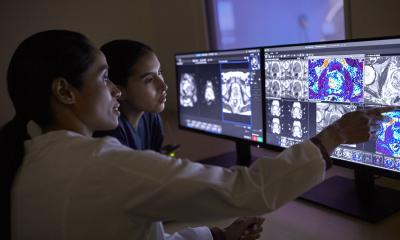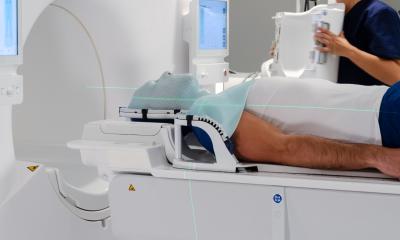Safeguarding the future of MRI
The campaign for an amendment to the electromagnetic fields directive
Europe holds a leading position in the research and development of MRI, which has been used for over 25 years, imaging up to 500 million patients without evidence of harm to workers due to EMF exposure. It is also well known that MRI is free from health risks associated with ionising radiation such as X-rays, in many situations the alternative to MRI
However, five years ago, the European Union Physical Agents 2004/40/EC (EMF) Directive, designed to prevent workers suffering undue health effects from exposure to electromagnetic fields, began to threaten the use and development of magnetic resonance imaging (MRI).
The exposure limits in the Directive have proved to be detrimental to patient care, most notably restricting and limiting MRI use in interventional applications and in imaging vulnerable patients and children, where closer patient contact is required. As Professor Gabriel Krestin, chairman of the Radiology Department at Erasmus University, explained, ‘Worker protection is taken very seriously. However, the current legislation threatens patient access to the benefits of MRI due to a hypothetical risk to workers. The Alliance for MRI hopes that its position will be reflected in the forthcoming proposal from the EC and we look forward to support from the European Parliament and the Council. As MRI is used in a controlled environment, comprehensive guidelines can guarantee the safety of workers without the need for EMF exposure limit values.’
Mary Baker, President EFNA (European Federation for Neurological Associations) commented: ‘MRI is central to the diagnosis and treatment of neurological diseases, including brain tumours, Parkinson’s disease and multiple sclerosis. This Directive severely limits MRI procedures in clinical and research work, to the serious detriment of patients’ interests.’
It also emerged that new research and developments in MRI will be severely restricted, along with routine cleaning and maintenance of MRI equipment.
The find ways to avert the threat to MRI, in October 2007 the Alliance for MRI, a coalition of European Parliamentarians, patient groups, leading European scientists and the medical community, was founded by the European Society of Radiology, the European Federation of Neurological Associations and Dr Hannes Swoboda MEP, Vice-Chairman of the Socialist Group in the European Parliament.
In the same month, the EC stated that it was never the intention of this Directive to impede the practice of MRI, and to allow more time for the evaluation of new data on EMF and its short-term effect on the human body, the European Commission (EC) proposed the postponement of the implementation deadline from April 2008 to April 2012. The postponement was approved by the European Parliament and the Council.
In mid-October this year, MEPs Dr Peter Liese and Stephen Hughes, with members of the Alliance for MRI, the European Society of Radiology (ESR), and the European Federation of Neurological Associations (EFNA), launched a parliamentary campaign and called on members of the newly elected European Parliament to support a derogation for all uses of MRI from the exposure limits set in the Directive. ‘MRI has become a key tool for the diagnosis, treatment and research of a number of diseases or conditions including cancer, cardiovascular and neurological diseases,’ Dr Liese pointed out. ‘From my experience as a ward doctor I know how important this is. I hope the position of the Alliance for MRI will be supported by members from all sides of the house.’ In support, Stephen Hughes added: Comprehensive safety guidelines already exist for the use of MRI and indeed the UK and many other member states have an established safety framework for both patients and staff.’
Early next year a proposal from the EC to amend Directive 2004/40/EC on electromagnetic fields will be sent to the European Parliament and Council.
Source and further details: www.alliance-for-mri.org
12.11.2009











